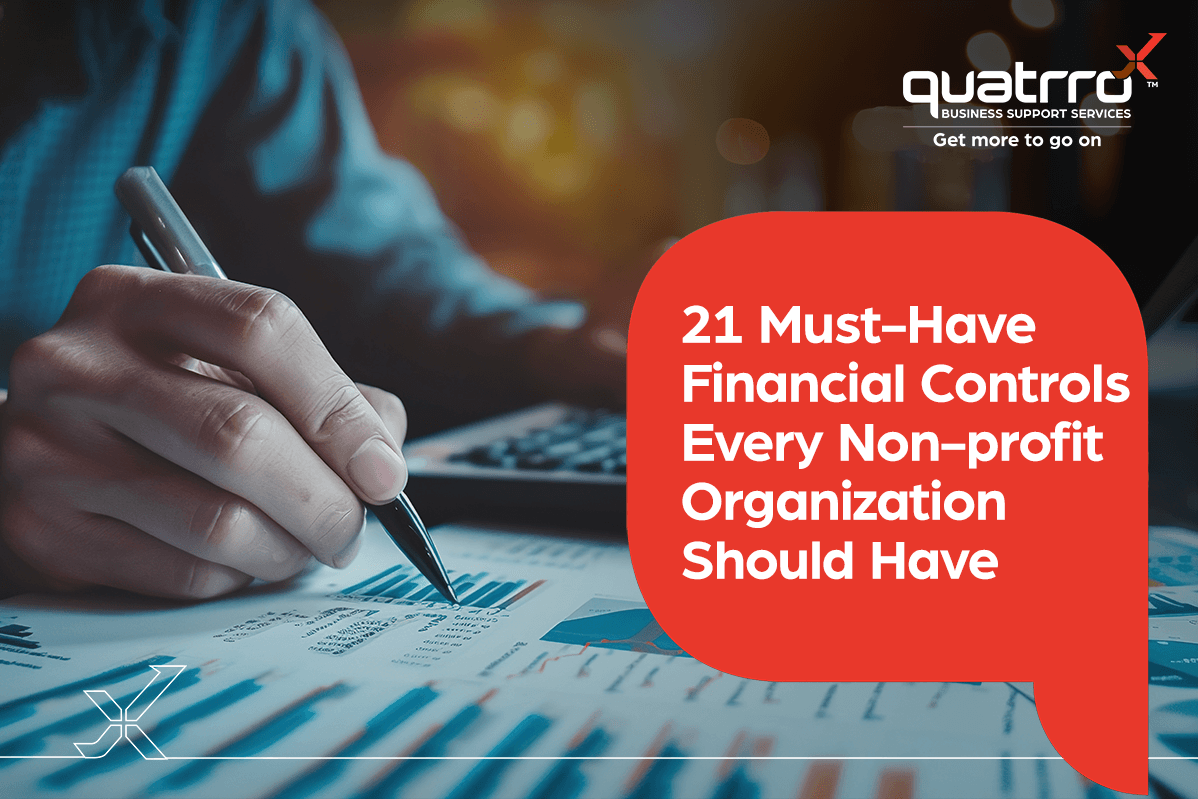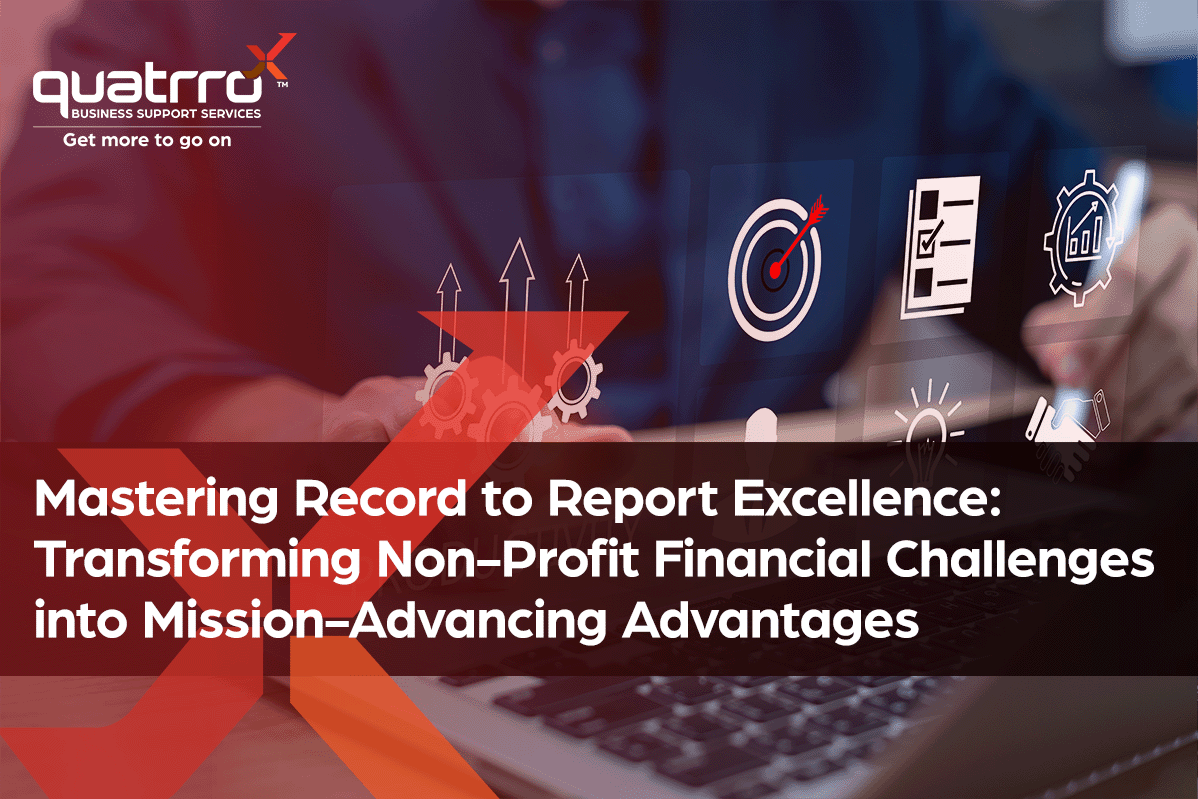Blog Details
21 Must-Have Financial Controls Every Non-profit Organization Should Have
December 3, 2024

Effective financial management is critical for the success of any non-profit organization. In a sector where every dollar is crucial, strong internal controls are not just a safeguard—they are the foundation for trust, transparency, and long-term sustainability. With increasing scrutiny from donors, regulators, and stakeholders, it has never been more important for non-profits to establish robust financial systems that protect their resources. Implementing key financial controls is essential not only to prevent fraud and mismanagement but also to manage risks, foster accountability, and maintain the integrity of the organization’s mission. Whether you’re a small local charity or a large international non-profit, prioritizing financial controls ensures that resources are used effectively and in alignment with your goals, creating a lasting impact. Here are some essential controls every NFP should implement. These practices go beyond protecting assets—they’re about building a sustainable foundation for long-term success.
1. Signing Authority Outside of the Finance Function
A key control is to separate the duties of signing checks, handling banking, investment, and debt management from the finance function. This segregation ensures transparency and reduces the risk of unauthorized transactions. Non-financial staff or board members should be responsible for signing authority, ensuring an added layer of oversight.2. Dual Approval for Significant Transactions
For any significant transfers, payments, ACH, and wire transactions, the banking platform should be set up to require dual approval. This “hard-coded” control helps prevent large unauthorized transactions by requiring at least two individuals to approve any critical financial movement. This control fosters accountability and reduces errors or fraud.3. Read-Only Access and Frequent Spot-Checks
Providing read-only access to bank accounts and investments for individuals who are not signers ensures that those reviewing the transactions remain impartial, reducing the risk of conflicts of interest or collusion. Regular spot-checking of these accounts by non-signing individuals helps detect unusual transactions or errors early, such as unauthorized withdrawals, misallocations of funds, or suspicious activity. This practice strengthens the organization’s internal controls by enhancing accountability, ensuring compliance with financial policies, and fostering a culture of transparency and trust in financial oversight.4. Finance Committee or Board Review of CEO/ED Expenditures
A regular review of the Executive Director’s (ED) or CEO’s credit card charges, debit card use, and reimbursements by the finance committee, board, or treasurer provides an important layer of oversight. Since the ED or CEO typically has significant decision-making authority and access to organizational funds, there is a higher risk of misuse or improper spending. By having an independent body like the finance committee or treasurer review these expenses, it ensures that all charges are appropriate, within the organization’s budget, and align with its financial policies. It is equally important to include anyone who has access to the organization’s checking accounts in this review process as well. This helps to prevent conflicts of interest, such as a person approving their own expenses or manipulating financial records. The review process deters fraudulent behaviour, ensures that spending is transparent and justifiable, and builds trust within the organization, especially in cases where the person being reviewed holds a high-ranking position. This practice strengthens internal controls and promotes ethical financial management.5. Annual Risk Assessment
An annual risk assessment by leadership and staff ensures that potential fraud and error risks are continually evaluated and addressed. This process allows the organization to stay vigilant against emerging threats and ensure that controls are relevant and effective.6. Secure Contract Review and Reconciliation
All contracts should be carefully reviewed to ensure they are signed, logged, and securely saved. The reconciliation of contracts to corresponding invoices and payments helps prevent discrepancies and ensures that payments align with agreed terms. Proper contract management also limits the risk of financial disputes with vendors or service providers.7. Vendor Authorization and Documentation
Before a vendor is added to the accounts payable system, they must be vetted and approved. Ensuring that standard vendor setup documentation is required for every new vendor minimizes the risk of fraudulent vendors entering the system. Proper vendor management promotes transparency and accountability.8. Revenue Reconciliation
Frequent reconciliation of fundraising, membership, ticket sales, and other revenue streams with the general ledger ensures accuracy. Regular monitoring prevents revenue loss or discrepancies that could affect the organization’s financial health and future.9. Mail and Check Handling by Non-Finance Personnel
Mail and checks should be opened by someone outside the finance function to maintain independence. Checks should be logged, secured, and deposited promptly using a bank scan. This separation of duties strengthens internal control and reduces the chance of misappropriation.10. Operating Liquidity Assessment
Organizations should regularly assess their operating liquidity by evaluating their liquid, unrestricted net assets. This ensures that the organization can meet its short-term financial obligations and remain financially healthy now and into the future.11. Grant and Contribution Compliance Monitoring
Grants and contributions must be reviewed regularly to ensure compliance with terms, conditions, and restrictions. Tracking these funds properly prevents mismanagement of restricted funds and ensures that donor intentions are honoured, which inspires confidence and loyalty from donors.12. Vendor and Address Verification
Before setting up new vendors or making changes to existing vendor information, phone verification and dual approval should be conducted. This control mitigates the risk of fraud by ensuring that updated vendor information is legitimate and accurate.13. Password-Protected Accounting System
The accounting system should require passwords and approvals for any retroactive changes. This control ensures that unauthorized or accidental adjustments to the financial records are prevented, safeguarding the integrity of financial data.14. Access Control and Two-Factor Authentication (2FA)
A comprehensive list of access rights to key financial systems should be maintained and regularly updated. Users who no longer need access should be purged from the system, and all logins should require two-factor authentication (2FA) to enhance security.15. Second Party Approval of Journal Entries
All accounting journal entries and adjustments must be reviewed and approved by a second party. This ensures that financial records are accurate and helps detect any errors or potential fraud early.16. Independent Payroll Review
Each payroll roster and register should be reviewed by someone outside the payroll function. Additionally, an “exception” audit report should be reviewed by someone outside of finance and payroll. This helps to identify any unusual payroll activities and reduce the risk of payroll fraud.17. Documented Financial Policies and Procedures
Comprehensive financial policies and procedures, with clear guidelines on authority and segregation of duties, should be documented. These policies should be reviewed annually to ensure that they are up-to-date and aligned with the organization’s current practices and regulatory requirements.18. Audit and Finance Committee Engagement
The audit and finance committee should be actively engaged, ensuring the organization’s financial controls are strong and effectively managed. Establishing a strong “Tone at the Top” through communication of the whistle-blower policy and regular training further solidifies the organization’s ethical foundation.19. Budget vs. Actual Monitoring
Regular monitoring of budgeted versus actual expenses for both operating and capital expenditures ensures that the organization stays on track financially. Significant variances should be explained and addressed promptly to prevent financial mismanagement.20. Dual Authorization for Debt and Credit Lines
To open a line of credit or take on debt, at least two individuals should be physically present. This requirement should be integrated into the banking system, ensuring that no single person can initiate such financial obligations unilaterally.21. Risk Management Protocols
Regular reviews of insurance policies, data backups, and cybersecurity protocols ensure that the organization is adequately protected against potential risks. These activities are essential for safeguarding the organization’s assets and maintaining operational continuity.Conclusion
Implementing robust financial controls is paramount for non-profit organizations seeking to maintain financial integrity and prevent fraud. By adhering to best practices in signing authority, transaction approvals, transparency, risk assessment, vendor management, and budget monitoring, non-profits can create a secure financial environment. These controls not only protect the organization’s resources but also build trust with stakeholders, thereby supporting the non-profit’s mission and long-term success. At Quatrro Business Support Services (QBSS), we recognize the critical role that strong financial controls play in the success of non-profit organizations. Whether you are a social impact group, health and human services organization, or educational institution, we offer tailored accounting, HR, and technology solutions designed to address your unique challenges. With increasing demands for compliance, transparency, and financial efficiency, QBSS helps non-profits implement key financial controls, such as dual approvals, independent reviews, and risk assessments. Our expert guidance and technological skills not only safeguard your resources but also empower your organization to proactively manage risks, prevent fraud, and foster long-term stability. By partnering with QBSS, you can confidently strengthen your financial infrastructure and stay focused on your mission.Latest Insights
Related Blogs
Contact Us







